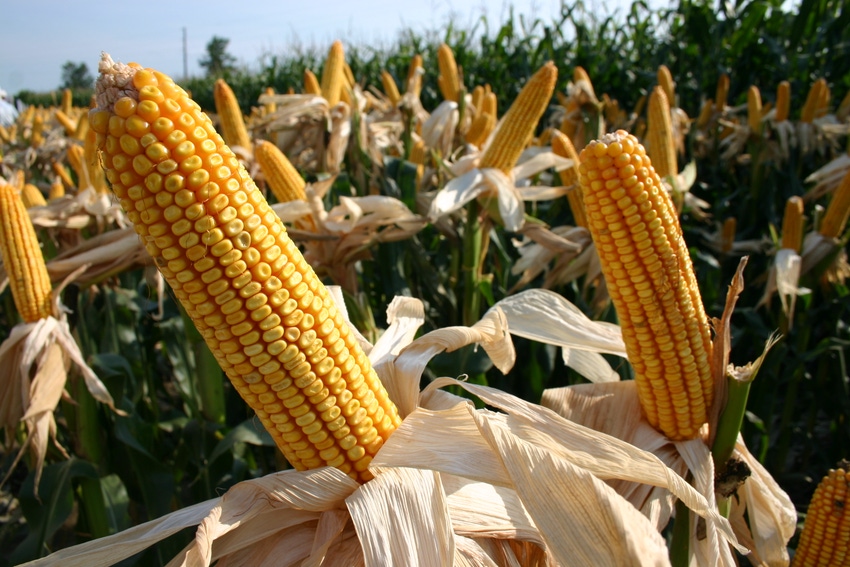
Going into 2016, what are some reasonable expectations for Mid-South grain producers? What are the markets saying?
For solid answers, a good person to ask is David Glidewell, ADM Mid-South Regional Manager. Glidewell, fresh off a mid-December presentation at the Agriculture Council of Arkansas’ winter meeting, spoke with Delta Farm Press. Among his comments:
On what the markets are considering…
“I don’t like to get into too many marketing details. All the farmers can be overloaded with data and it seems they hear every prognosticator in the world. But it’s worth emphasizing some key factors the markets will be looking at.
“Two of those factors are nearly upon us. First, what will be the reaction to the Federal Reserve interest rate hike? Second, will Argentina devalue their currency? These are things hanging over the market. A stronger U.S. dollar alongside a weaker Argentine peso would probably be another bearish log on the fire – especially for soybeans.
“There are comfortable world stocks in all the agriculture commodities. Without a disruptive weather event, expect prices to remain in a bearishly biased range of trade. You can have a pretty wide range in a bearish market – something like $9.50 to $8.50 for soybeans and $3.65 to $4.50 for corn. I’m not saying $9.50 or $4.50 will be met but with the current stock situation, those numbers are likely the high end of the range for the next 12 months. We’re just not in any danger with stocks.
“Without disruptive weather issues in the next 12 to 24 months, producers should probably look at preserving wealth rather than hoping for a miracle. Don’t put your hopes in something big happening. Develop a plan and be disciplined while remaining nimble and paying attention to what’s going on in the market.”
Bullish life?
Is there any crop that shows any sort of bullish life in the short term?
“If you look at stocks to use ratios, rice, corn and soybeans aren’t burdensome. Neither is cotton. We aren’t buried in supply and assuming normal production there’s no reason to suspect the market will need to rally.
“Here again, I think corn and soybeans are sensitive to weather issues. That’s why I have such a wide price range. We all know, though, that at least once a year we try to kill the crop in the market. You know, ‘We’ve had issues getting the crop planted on a timely basis.’
“There will be an opportunity to price grain at higher-than-present levels. That happens every year – I’ve been doing this 30 years and can’t remember one where there hasn’t been at least one opportunity. Picking a day or what the driver will be are the unknowns.
“The reason is we’ve balanced world supplies. There are northern and southern hemisphere supplies of corn and soybeans. There’s much less risk of a supply shock.
“Of course, there’s still time for something to happen in South America. January is a key month in making that soybean crop. February is a key month for finishing off the soybean crop in Argentina.
“Brazil needs good weather in February to get the second corn crop planted – and that’s iffy because it’s been too wet in the south and too dry in the north. That has led to their soybean crop later than average. I believe it’s lagging about 5 percent compared to their average.
“So, there’s plenty of time for bad weather to rear its head in South America. All the big, traditional commodity trading funds are all short with soybeans, corn and wheat. That means any time of bullish market feedback would make them more likely to cover shorts, as well.”
Milo
On grain sorghum…
“Last year, delivered river cash prices for milo were at as much as $1 premium. That was all driven by Chinese demand. The other big buyers of sorghum will buy it but only when it’s priced competitively, or at a slight discount, to corn.
“The Chinese pushing milo prices was due to a high domestic corn price that encouraged the importation of cheaper U.S. milo. The Chinese really like U.S. sorghum. They used the milo predominantly for pork rations in their pork industry. Other milo was used to make a white liquor.
“The landscape has changed dramatically since August or early September. No large, new sales of U.S. sorghum have been made to China. The pace is much reduced.
“Chinese authorities have made some efforts to encourage increased usage of domestic corn and less imports of milo. Does that mean they’re gone from our milo market forever? I wouldn’t suggest that but it wouldn’t be prudent for me to lean towards them roaring back in 2016.”
On feedback from producers…
“The feedback we get from farmers is a lot of worry. They’re in a hunker down mode and that was in evidence at the Ag Council (of Arkansas) meeting. Folks are going to be as efficient as possible and they’ll do what they can to make their cost per bushel to survive another year of poor prices.
“I do think we’ll see some shift in the Memphis region. From my perspective, that goes through western Tennessee up to the Kentucky line, East Arkansas from Helena to the bootheel, north Mississippi down to Clarksdale. That area, from what I’m hearing, will see a little more cotton, corn and rice planted next year. Soybean acres will probably stay about the same. It’s hard to find a wheat field in the Delta.”
About the Author(s)
You May Also Like




